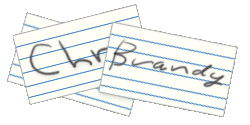|
A. Questioning Strategies
Socrates is generally credited with pioneering the technique of
teaching through questions. Teachers can incorporate questions
to help assess students' knowledge, reasoning, and attitudes. In
an excellent article called Classroom
Questioning, Kathleen Cotton lists the following reasons for
asking questions in the classroom (Cotton, 2001, p. 1).
- To develop interest and motivate students to become actively
involved in lessons
- To evaluate students' preparation and check on homework or seatwork
completion
- To develop critical thinking skills and inquiring attitudes
- To review and summarize previous lessons
- To nurture insights by exposing new relationships
- To assess achievement of instructional goals and objectives
- To stimulate students to pursue knowledge on their own
Questions, both formal and informal, are a cornerstone of teaching
and learning. Although it seems that teachers "naturally"
ask questions in the classroom, there are several techniques that
are worth reviewing:
- Plan ahead -- as you outline each lesson, think about potential
questions to ask.
- Keep the questions simple, short, and easy to understand.
- Try to address higher levels of Bloom's Taxonomy -- emphasize
aspects of why and how.
- Randomly call on ALL students -- those with raised hands and
those without.
- Allow wait time after asking a question; especially for higher
level questions.
- Be supportive in your feedback; never embarrass students.
- Stay on track -- if you or a student goes off on a tangent,
you'll lose the interest of the rest of the students.
- Ask before telling -- encourage students to think through a
situation, scenario, or problem before giving them the solution.
Better yet, help them derive the solution themselves!
- Use probing techniques to encourage students to clarify their
ideas and explain their reasoning.
- Promote "accountable talk" by focusing on concepts
related to curriculum standards and encouraging students to provide
rationale for their opinions and reasoning.
- Encourage students to participate and to elaborate and build
on each other's ideas.
- Challenge students to formulate hypotheses, based on accurate
knowledge.
Most questioning activities in the classroom are informal; in the
general course of teaching, questions are used to summarize topics,
assess understanding, expand topics, and motivate students.
However, formal questioning strategies are also possible. Donna
Qualters outlined a few strategies in Using Classroom Assessment
Data to Improve Student Learning, including:
- Muddiest Part of the Lecture -- Pass out 3x5 cards to the students
and ask them to write down anything in a lesson that is unclear
or confusing.
 Collect the cards at the end of the lecture, and provide feedback
(and elaboration) during the next class meeting.
Collect the cards at the end of the lecture, and provide feedback
(and elaboration) during the next class meeting.
- Cold Calling -- Write all of the students' names on 3x5 cards.
Then, shuffle the cards. As you go through the lesson, select
a card from the stack for each question.
- Concept Tests -- Students learn from asking each other questions.
Ask students to write their answers to a complex question on a
piece of paper. Then, ask the students to confer with their neighbor
to defend their answers.
|









 Collect the cards at the end of the lecture, and provide feedback
(and elaboration) during the next class meeting.
Collect the cards at the end of the lecture, and provide feedback
(and elaboration) during the next class meeting.